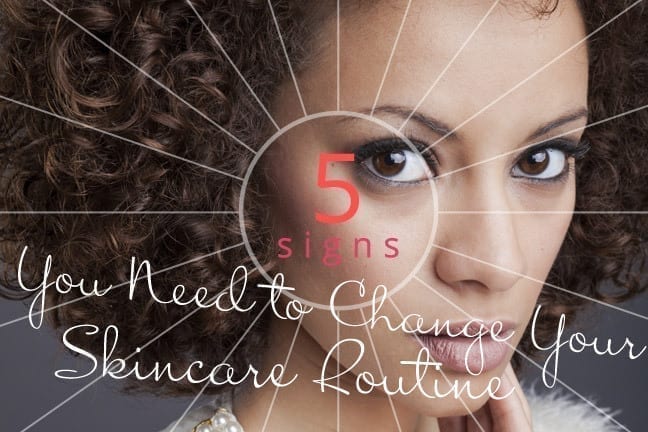1. Your skin is backsliding. This seems unnecessarily cruel, but even that magic cure-all potion you fell in love with might end up betraying you over time. Rude! Dermatologist Dennis Gross says that your skin can develop a resistance to products or ingredients; for example, acne-causing bacteria may become resistant to an antibiotic like benzoyl peroxide, causing it to fail to work. Then you’ve got to head down a new skincare path.2. The days are longer (or shorter). Just as three-ply cashmere is out of place in the summer and winter isn’t sandal-friendly, skincare products need to be changed up according to seasons. Heat and high humidity trap more oil and dirt on the skin’s surface, and then it’s hello gross clogged pores. An exfoliating cleanser made with glycolic or salicylic acid will help set you straight, and a switch to lighter formulas (like gels or serums) is a must. Dermatologist Fredric Brandt says to look for lightweight formulations made with humectants such as hyaluronic acids and ceramides, rather than heavier formulas that contain occlusive ingredients like shea butter, silicone oils and mineral oil. “When it gets cold, cut back on exfoliation,” he says. “Too much can irritate the upper layer of the skin and decrease the skin’s protective barrier.”3. You have a bun in the oven. There’s more to the early stages of pregnancy than morning sickness and weird food combo binges. Jaliman says that hormonal fluctuations in pregnancy can cause many women, especially in the first trimester, to get acne. She suggests switching to a lineup of noncomedogenic products, including moisturizers, sunscreens, cleansers and makeup. Brandt adds that increased sun sensitivity is common throughout the entire nine month period, so certain ingredients like retinoids are not to be used. Instead, switch to gentle, botanical-based ingredients.4. It’s your birthday. Birthdays that end in zeros can be slightly panic-inducing for some, but everyone can—and should—use them as the ideal time to reevaluate the old skincare routine. Gross says that the eye area is the first to show signs of aging, so he says to begin using a moisturizing under-eye cream or gel in your 20s. “Make retinol a part of your anti-aging arsenal in your 30s because it stimulates the production of new skin cells and inhibits the body’s natural enzymes that break down collagen,” he says. “In your 40s and 50s, try using products that contain hyaluronic acid, because they actually bring water from the atmosphere into your skin, so it will look plumper and firmer.”5. You see zero change. File this one under the “duh” category, but it’s time to rethink your routine if the products you’re currently using just aren’t working. If you experience redness or burning, persistent breakouts and clogged pores or hyperpigmentation spots that won’t go away, you need some new options. But don’t overhaul in one go, warns dermatologist Debra Jaliman. “I recommend changing only one product per week. That way if you get a reaction to a product, you know which one is causing the problem,” she says. “This is especially important if you have sensitive skin that tends to turn red easily.”
© YouBeauty 2024




































